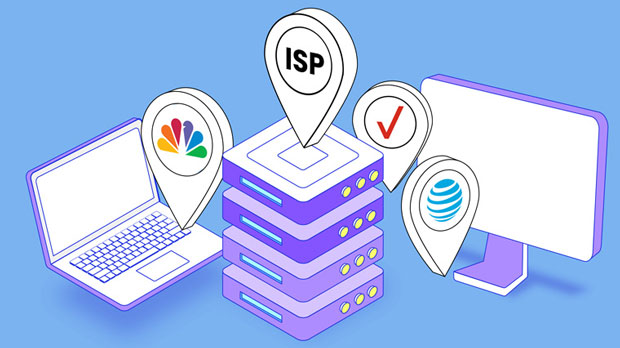What is the difference between Squid Proxy Server and PyProxy S5 for log management in residential proxies?
In the context of residential proxies, log management plays a crucial role in ensuring efficient monitoring, security, and optimization. The Squid Proxy Server and PYPROXY S5 are both popular tools used for proxy management, yet they differ significantly in terms of their logging capabilities and functionalities. Squid Proxy Server, known for its flexibility and scalability, offers advanced logging features that are widely used for analyzing traffic and ensuring security. On the other hand, pyproxy s5 focuses more on simplicity and efficiency, providing streamlined log management for users looking for less complexity. Understanding these differences is essential for businesses that rely on residential proxies for various purposes, as it can directly impact performance, security, and compliance. Understanding residential proxy Log ManagementBefore diving into the specifics of Squid Proxy Server and PyProxy S5, it's important to understand the core concept of log management in residential proxies. Residential proxies are IP addresses assigned from real devices located within residential areas, offering a higher level of anonymity and making them highly useful for a variety of tasks, such as web scraping, bypassing geo-blocked content, or even fraud prevention.Log management in this context refers to the collection, organization, and analysis of data generated by proxy servers. Logs contain information about network activity, such as the websites accessed, the amount of data transferred, and the origin of the request. Proper log management is crucial for maintaining transparency, troubleshooting, and ensuring that proxies are being used ethically and effectively. By carefully analyzing logs, administrators can optimize proxy usage, track performance, and ensure that users do not violate any terms of service or legal requirements.Squid Proxy Server: An OverviewSquid Proxy Server is an open-source proxy server software that has been in the market for several years. Known for its robustness, Squid is widely used for web caching, content filtering, and logging. The server’s logging capabilities are highly customizable, which makes it an ideal choice for businesses that need detailed reports for monitoring and analysis.One of the most notable features of Squid Proxy is its detailed access logging. Squid provides access logs that record extensive information about each HTTP request, including the client IP, timestamp, HTTP method, URL requested, response code, and the size of the data transferred. These logs are essential for tracking usage patterns, identifying potential security threats, and ensuring that the proxy is functioning correctly.Squid logs can be further customized to record additional data points, allowing for more granular monitoring. It supports both plain text and more structured log formats, making it flexible for integration with other monitoring tools. The detailed nature of Squid's logs helps administrators identify slow-loading pages, detect anomalies, and even optimize bandwidth usage by identifying frequently requested content.PyProxy S5: A Simplified Approach to Proxy Log ManagementIn contrast to Squid, PyProxy S5 is a newer and more streamlined proxy management solution. It is specifically designed for users who need a simpler, less resource-intensive tool for handling residential proxy services. While PyProxy S5 does not offer the same level of complexity as Squid, it does provide sufficient logging features for most basic proxy use cases.PyProxy S5’s log management primarily focuses on recording essential information related to proxy connections, including the IP address, connection timestamps, and the type of requests made. However, it doesn’t provide the same level of detail as Squid. PyProxy S5's logs are more focused on operational monitoring, ensuring that proxies are functioning correctly without being overloaded by excessive data points.This simplicity makes PyProxy S5 an excellent choice for small businesses or individuals who do not require advanced analytics or extensive customization. Its straightforward log management is user-friendly and enables fast troubleshooting of common proxy issues, such as connection failures or performance bottlenecks.Key Differences in Log Management1. Detail and Customization: Squid Proxy Server excels in offering detailed and customizable logs, which is beneficial for businesses that need in-depth analysis of proxy activity. Its flexibility allows for monitoring various data points beyond basic connection information, providing comprehensive insights into usage patterns. In contrast, PyProxy S5 keeps logs minimal, focusing primarily on operational metrics without delving into intricate details.2. Log Formats: Squid supports multiple log formats, such as plain text and the more structured "Combined Log Format," which makes it easier for administrators to process logs with third-party tools or scripts. On the other hand, PyProxy S5 uses simpler log formats that are easier to read but lack the flexibility for complex log parsing and integration with other software.3. Scalability: Squid Proxy Server is designed to handle large-scale environments, making it ideal for businesses with extensive proxy networks. It can manage high traffic volumes and generate logs for thousands of requests per second. PyProxy S5, while efficient, is better suited for smaller-scale operations where simplicity and ease of use are prioritized over scalability.4. Security and Anomaly Detection: The detailed logs provided by Squid make it easier to detect suspicious behavior, such as unusual traffic patterns or security breaches. For instance, administrators can set up alerts for specific HTTP response codes or identify requests that originate from unusual IP addresses. PyProxy S5, however, lacks these advanced features, focusing on basic functionality rather than security-specific logging.5. Resource Consumption: Due to its extensive logging and data processing capabilities, Squid can be more resource-intensive, especially when handling large volumes of traffic. PyProxy S5, in contrast, is lightweight and requires fewer system resources, making it more efficient for smaller operations where performance optimization is not as critical.Choosing Between Squid Proxy Server and PyProxy S5The choice between Squid Proxy Server and PyProxy S5 depends on the specific needs of the user or organization. Squid is an excellent choice for larger businesses or enterprises that need detailed log analysis and high scalability. Its logging features are ideal for those who require deep insights into proxy activity, security monitoring, and performance optimization.On the other hand, PyProxy S5 is best suited for smaller businesses or individual users who prefer a straightforward, less resource-heavy solution. Its ease of use and simple logging capabilities make it a great option for those who do not need complex data analysis or advanced security features.Conclusion: Log Management in Residential Proxy NetworksIn conclusion, both Squid Proxy Server and PyProxy S5 offer valuable tools for managing residential proxy networks, but they cater to different types of users. Squid’s rich log management capabilities are ideal for businesses requiring extensive analysis, while PyProxy S5’s simplicity makes it an excellent choice for those with less complex needs. Understanding the differences in log management can help businesses make more informed decisions based on their specific requirements, leading to better proxy performance, enhanced security, and overall operational efficiency.
2025-03-04























































